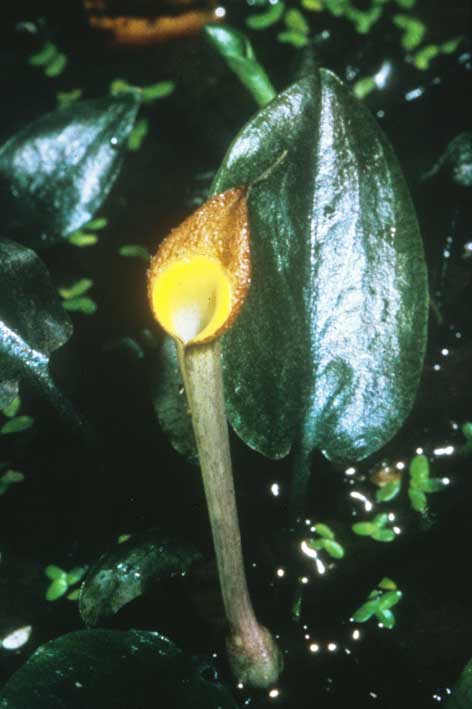 |
Cryptocoryne siamensis var. diderici.
Dark green leaves, the lower side purplish, with a more or less heart shaped base. TYPE material
coll. J. Liet s.n.
photo de Wit |
|
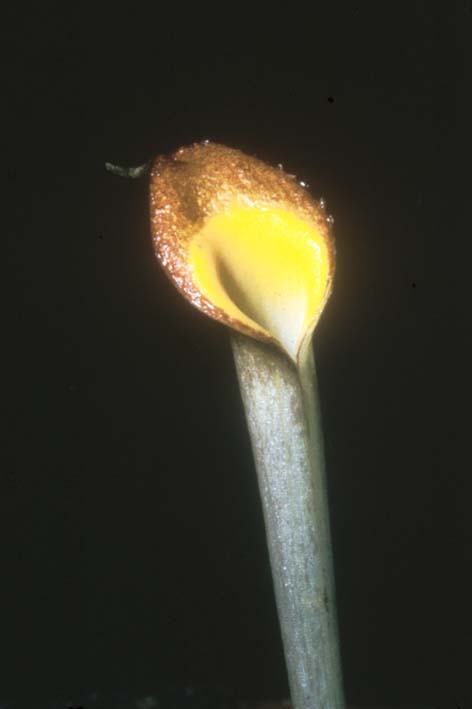 |
The limb of the spathe shows a broad yellow
throat, with a more or less distinct collar. The surface of the limb is a bit rough and
brownish.
coll. J. Liet s.n.
photo de Wit
|
|
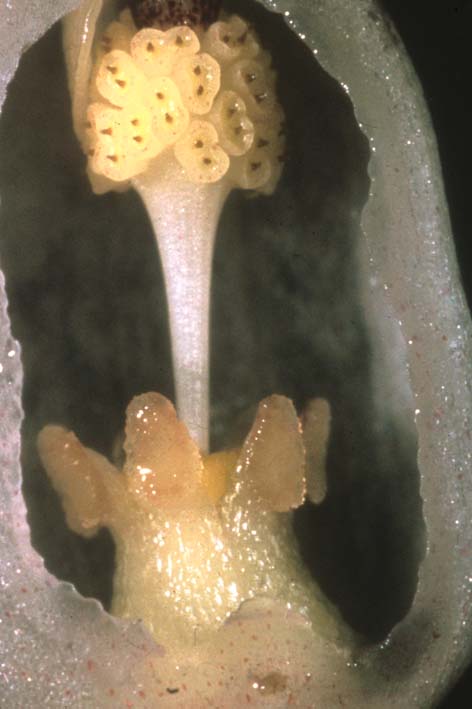 |
The purple spotted appendix (just above the male
flowers) of C. cordata var. diderici is just to be seen in this picture.
coll. J. Liet s.n.
photo de Wit |
|
 |
A plant from the collection of Blass, cultivated
in Copenhagen in the 1970´s. The plant is probably from the same source (Liet) as de
Wit's plant.
photo Jacobsen
|
|
| |
|
|
|
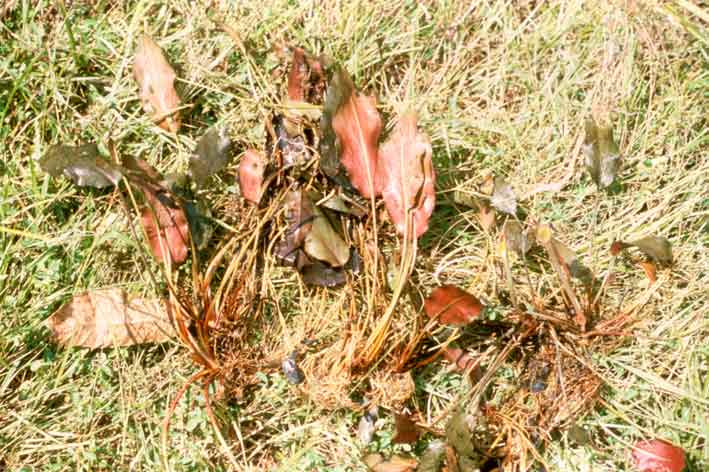 |
In 1985, Jacobsen and Bogner collected C. siamensis var. diderici in Sumatra (Indonesia)
coll. Jacobsen NJ 85-23
photo Jacobsen
|
|
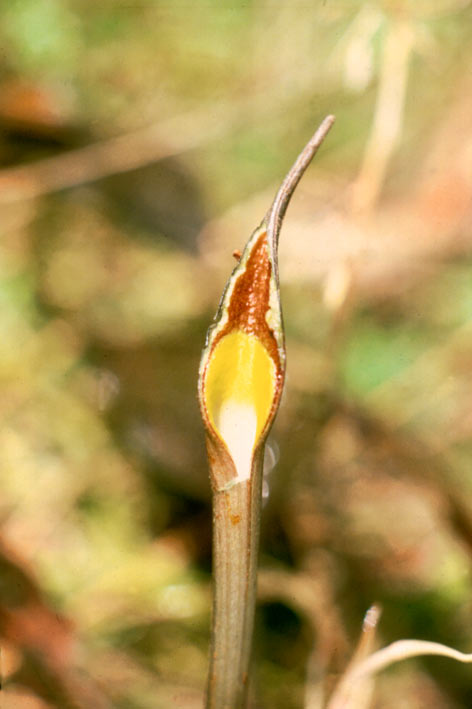 |
A 'manually' opened limb of the spathe. This is
a wild collected specimen. No plants survived in cultivation.
coll. Jacobsen NJ 85-23
photo Jacobsen
|
|
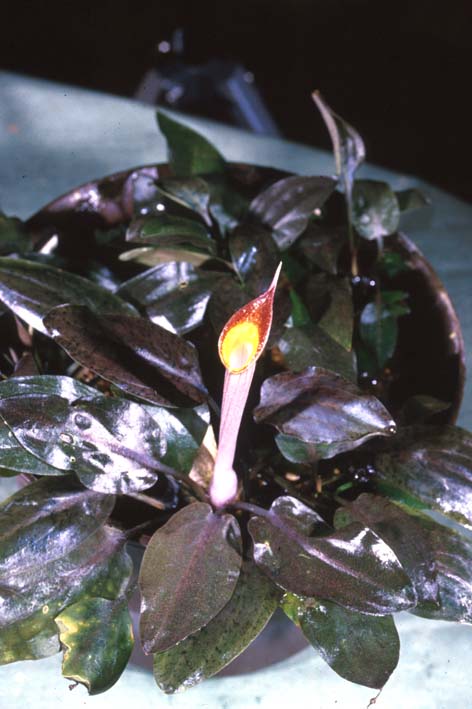 |
The plants of the other collection are
widespread in cultivation. Note the rather small leaves with on the upper surface fine red
dots, giving it a purplish glow.
coll. Jacobsen NJ 85-26
photo Ehrenberg
|
|
 |
A close up of the leave, showing the fine red
dots on the surface (the ruler in cm). In emersed cultivated specimen this is a distinct
feature.
coll. Jacobsen NJ 85-26
photo Bastmeijer
|
|
| |
|
|
|
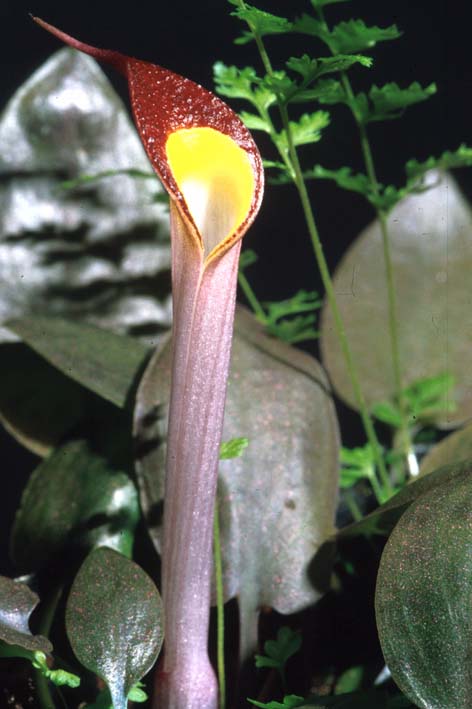 |
A full grown specimen of NJ 85-26 cultivated by Piet van
Wijngaarden. Note the red colour of the limb and the smooth leaves.
coll. Jacobsen NJ 85-26
photo van Bruggen
|
|
 |
The limb of the spathe has a short tail, what is
a typical feature of C. siamensis var. diderici. This spathe just opened
and will spread in a couple of hours.
coll. Jacobsen NJ 85-26
photo Bastmeijer
|
|
 |
With special lighting, the rough surface of the
limb is enhanced. Note also the 'swollen' throat zone, making a more or less distinct
collar.
coll. Jacobsen NJ 85-26
photo Bastmeijer
|
|
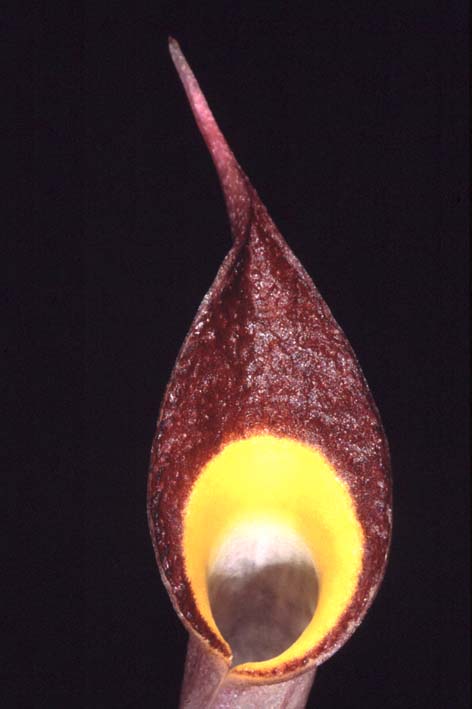 |
A very deep red limb of the spathe.
coll. Jacobsen NJ 85-26
photo van Bruggen
|
|
| |
|
|
|
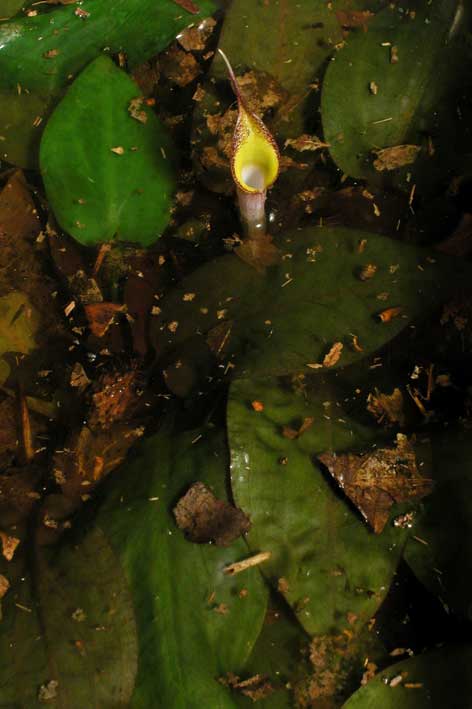 |
Cultivated in a 'swamp' with decomposing leaves of the beech tree.
coll. Kishi 09-01
photo Bastmeijer
|
|
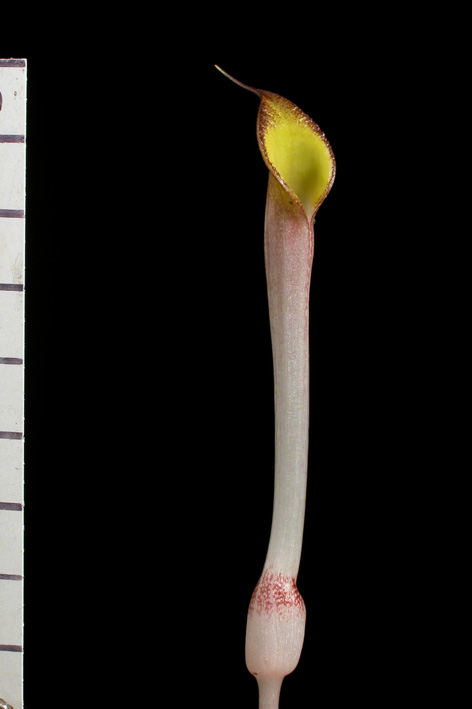 |
The spatha dismounted. The ruler is in cm.
coll. Kishi 09-01
photo Bastmeijer
|
|
 |
The limb of the spathe with a short tail. There is no clear collar.
coll. Kishi 09-01
photo Bastmeijer
|
|
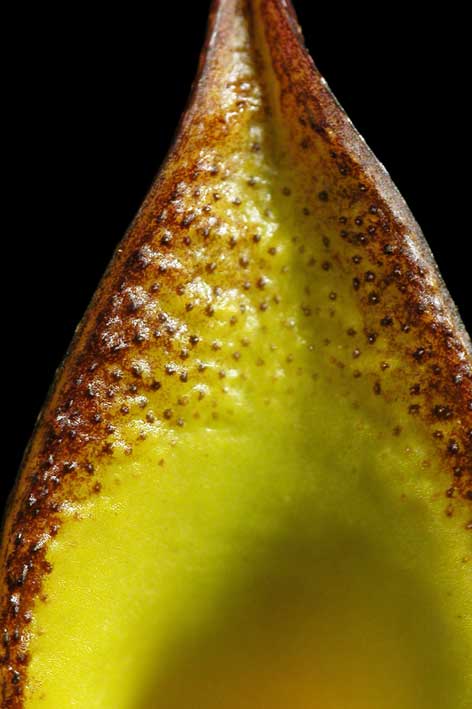 |
The limb is a bit rough. Note the fine red dots, increasing towards the margin.
coll. Kishi 09-01
photo Bastmeijer
|
|
| |
|
|
|
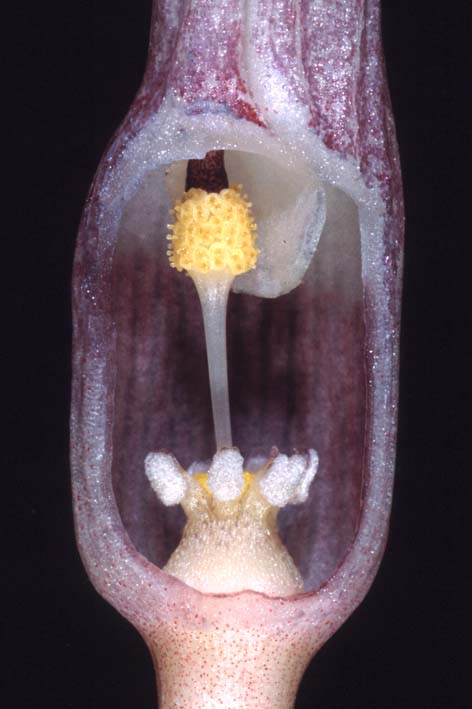 |
A view in the opened lower part of the spathe
('kettle'). Note the slight purple coloured inside wall of the kettle.
coll. Jacobsen NJ 85-26
photo van Bruggen
|
|
 |
A dark purple appendix of the (rather
short) spadix. The inside wall of the kettle is white.
coll. Jacobsen NJ 85-26
photo van Möhlmann
|
|
 |
The inside wall of the kettle is slight purple
at this inflorescence. The stigma's are not as white because of they become wet after a
few days.
coll. Jacobsen NJ 85-26
photo Bastmeijer
|
|
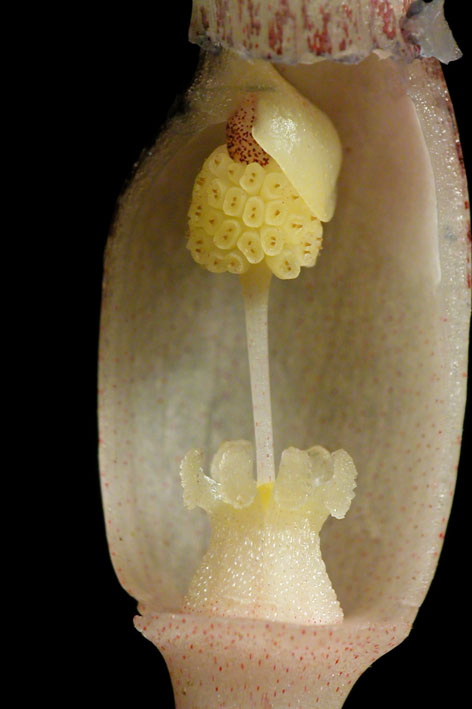 |
In Kishi's plant the kettle wall is almost white, it has only a few very small red dots.
coll. Kishi 09-01
photo Bastmeijer
|
|
| |
|
|
|
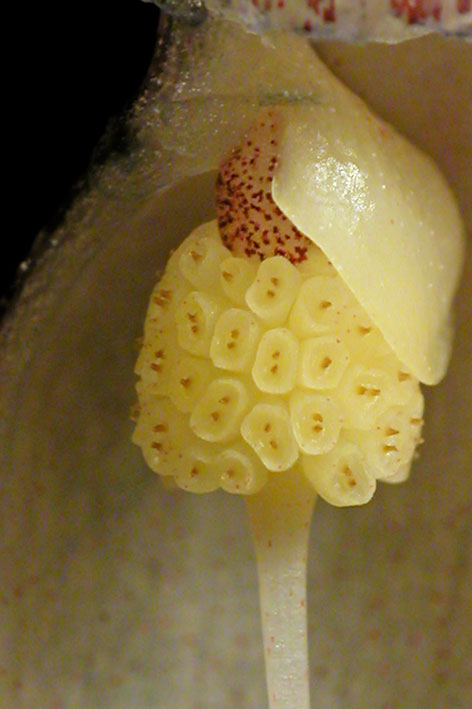 |
Close up of the male flowers and the purple dotted appendix, partly hidden behind the valve..
coll. Kishi 09-01
photo Bastmeijer |
|
 |
Close up of the female flowers with the yellow olfactory bodies. Note the few red spots on the naked part of the spadix.
coll. Kishi 09-01
photo Bastmeijer
|
|
 |
Drawing of C. siamensis var. diderici in de Wit 1970, 1990. based on the the material from Liet.
drawing Ike Zewald |
|
 |
Known distribution of C. siamensis var. diderici.
The question mark refers to the uncertain location mentioned as 'North of Malacca'.
|
|
| |
|
|
|
C. cordata var. diderici differs form the the other var´s of the cordata group by a more rough limb of the spathe that varies in colour from brownish to reddish.
The inside wall of the kettle is white to purple (C. cordata var. cordata may have some fine red dots) and the top of the spadix is
purple, like C. grabowskii. The
latter has often a distinct purple zone in the upper part of the kettle.
Cultivating is rather simple in emersed or semi-emersed conditions. Probably it is a good aquarium plant,
but as far as I know, nobody tried it.
Etymology. The plant is named after Dirk, the first name of the father of De Wit.
See also the other Cryptocoryne of the cordata-group.
Updated May 2013 |
Literature.see the cordata-group.
|
|